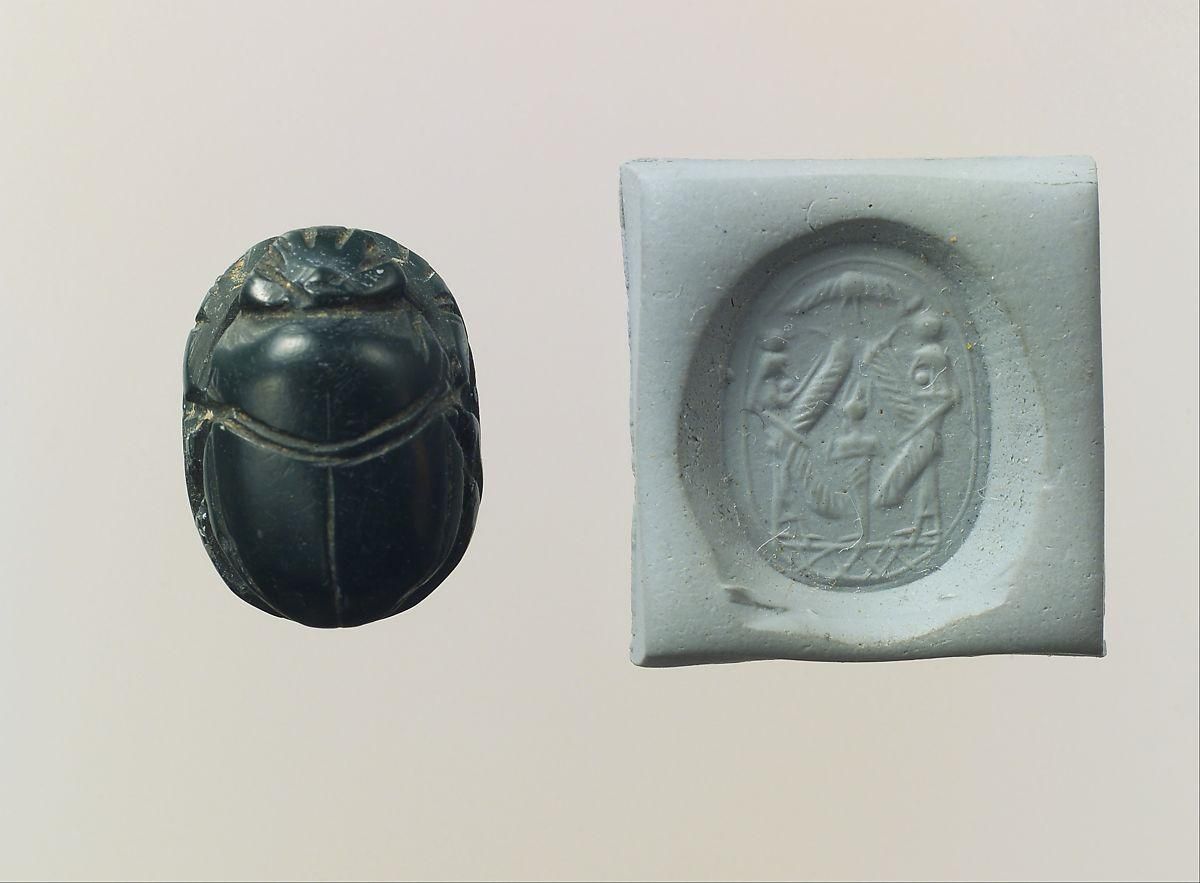
Scarab seal and modern impression: Osiris flanked by protective deities
Unknown Artist
Around the beginning of the first millennium B.C., Phoenician seal engravers adopted the use of the scarab, an Egyptian symbol of regeneration. In typical Phoenician fashion, the seals were decorated with Egyptian motifs that are juxtaposed out of context, sometimes with non-Egyptian animal subjects. Popular subjects included the birth of Horus and scenes of his mother Isis nursing him as an infant. Winged protective deities and genies were also favorite themes. Iconographically, the seals of the eighth to seventh centuries B.C. have a close dependence on Phoenician carved bowls and ivories. Phoenician scarab seals reached a peak of popularity in the fifth to fourth centuries B.C., when they spread throughout the Mediterranean. The city of Tharros on Sardinia was a major center of production and distribution. By this time, the seals were carved with not only Egyptian themes but also Etruscan and western Greek imagery.
On this scarab, two protective winged goddesses wearing sun-disk headdresses flank the Egyptian god Osiris. Above is a winged sun disk. A line borders the scene and the figures stand on a ground line decorated below with crosshatching.
Credit: Bequest of W. Gedney Beatty, 1941
c. 6th-5th century B.C.
Jasper, green
1.9 x 1.4 cm
41.160.162
Image and text © Metropolitan Museum of Art, 2019
Where you'll find this

Permanent collection
